Systemic Insights for Value Creation in Solar PV Energy Markets: From Project Management to System Impacts
Abstract
1. Introduction
2. Integrating SD in Energy Projects for Assessing Innovation Impact
3. Model Description
3.1. Case Study on Solar PV Energy Project in Colombia
3.2. Dynamic Behaviour Hypothesis
3.3. Description of the System and Sub-Systems
3.3.1. Project Management Sub-System
3.3.2. Sustainability Sub-Systems
3.4. Model Validation
3.5. Model Limitations
- The model is adapted from a single solar PV energy case study. As a result, it includes specific inputs that may vary in other countries (e.g., this project assumes a constant government tariff scheme for households).
- The system impact stage is evaluated based on two scenarios: (1) the electricity generated by the solar PV energy project case study and (2) an assumed amount of electricity generated from fossil fuels.
- The simulation does not account for the production of solar PV panels because Colombia imports this clean technology rather than manufacturing it domestically. Instead, our system dynamics methodology incorporates product innovation by selecting solar PV panels with the best performance management for the project.
- The SD model simplifies the rework cycle, assuming that rework tasks require the same effort as the original tasks.
4. Results and Discussion
4.1. System Impact of Innovation in Project Management
4.1.1. Governance of Innovation and Inclusive Innovation
4.1.2. Process Innovation and Product Innovation
4.2. System Impact of Sustainability in Project Management
4.2.1. Social Dimension
4.2.2. Environmental Dimension
4.2.3. Economic Dimension
5. Conclusions
Author Contributions
Funding
Data Availability Statement
Acknowledgments
Conflicts of Interest
References
- Hussain, S.; Xuetong, W.; Maqbool, R.; Hussain, M.; Shahnawaz, M. The Influence of Government Support, Organizational Innovativeness and Community Participation in Renewable Energy Project Success: A Case of Pakistan. Energy 2022, 239, 122172. [Google Scholar] [CrossRef]
- Daniel, P.A. Multi-Level Perspective Framework in Macro Project Studies: Towards a Complex Project Organizing Approach to Sustainability Transitions. Int. J. Proj. Manag. 2022, 40, 865–870. [Google Scholar] [CrossRef]
- Geels, F.W.; Locatelli, G. Broadening Project Studies to Address Sustainability Transitions: Conceptual Suggestions and Crossovers with Socio-Technical Transitions Research. Int. J. Proj. Manag. 2024, 42, 102646. [Google Scholar] [CrossRef]
- United Nations. The Sustainable Development Goals Report 2020; United Nations: New York, NY, USA, 2020.
- International Energy Agency. Strategies for Affordable and Fair Clean Energy Transitions; World Energy Outlook Special Report; International Energy Agency: Paris, France, 2024.
- Garces, E.; Tomei, J.; Franco, C.J.; Dyner, I. Lessons from Last Mile Electrification in Colombia: Examining the Policy Framework and Outcomes for Sustainability. Energy Res. Soc. Sci. 2021, 79, 102156. [Google Scholar] [CrossRef]
- Zapata, S.; Castaneda, M.; Aristizabal, A.J.; Dyner, I. Renewables for Supporting Supply Adequacy in Colombia. Energy 2022, 239, 122157. [Google Scholar] [CrossRef]
- Silva, A.R.; Pimenta, F.M.; Assireu, A.T.; Spyrides, M.H.C. Complementarity of Brazils Hydro and Offshore Wind Power. Renew. Sustain. Energy Rev. 2016, 56, 413–427. [Google Scholar] [CrossRef]
- Ávila, L.; Mine, M.R.M.; Kaviski, E.; Detzel, D.H.M. Evaluation of Hydro-Wind Complementarity in the Medium-Term Planning of Electrical Power Systems by Joint Simulation of Periodic Streamflow and Wind Speed Time Series: A Brazilian Case Study. Renew. Energy 2021, 167, 685–699. [Google Scholar] [CrossRef]
- Viviescas, C.; Lima, L.; Diuana, F.A.; Vasquez, E.; Ludovique, C.; Silva, G.N.; Huback, V.; Magalar, L.; Szklo, A.; Lucena, A.F.P.; et al. Contribution of Variable Renewable Energy to Increase Energy Security in Latin America: Complementarity and Climate Change Impacts on Wind and Solar Resources. Renew. Sustain. Energy Rev. 2019, 113, 109232. [Google Scholar] [CrossRef]
- Galeazzi, C.; Steinbuks, J.; Anadon, L.D. Assessing the Impact of Renewable Energy Policies on Decarbonization in Developing Countries. Renew. Sustain. Energy Rev. 2024, 199, 114444. [Google Scholar] [CrossRef]
- Zapata, S.; Castaneda, M.; Herrera, M.M.; Dyner, I. Investigating the Concurrence of Transmission Grid Expansion and the Dissemination of Renewables. Energy 2023, 276, 127571. [Google Scholar] [CrossRef]
- Leusin, M.E.; Uriona Maldonado, M.; Herrera, M.M. Exploring the Influence of Brazilian Project Cancellation Mechanisms on New Wind Power Generation. Renew. Energy 2024, 221, 119755. [Google Scholar] [CrossRef]
- He, J.; Yang, Y.; Liao, Z.; Xu, A.; Fang, K. Linking SDG 7 to Assess the Renewable Energy Footprint of Nations by 2030. Appl. Energy 2022, 317, 119167. [Google Scholar] [CrossRef]
- UPME. Generación Aprobada 2022–2027. Available online: https://public.tableau.com/profile/upme#!/vizhome/GeneracionAprobada/GeneracionAprobada (accessed on 2 March 2021).
- Henao, F.; Dyner, I. Renewables in the Optimal Expansion of Colombian Power Considering the Hidroituango Crisis. Renew. Energy 2020, 158, 612–627. [Google Scholar] [CrossRef]
- Garces, E.; Franco, C.J.; Tomei, J.; Dyner, I. Sustainable Electricity Supply for Small Off-Grid Communities in Colombia: A System Dynamics Approach. Energy Policy 2023, 172, 113314. [Google Scholar] [CrossRef]
- Coşgun, A.E.; Endiz, M.S.; Demir, H.; Özcan, M. Agrivoltaic Systems for Sustainable Energy and Agriculture Integration in Turkey. Heliyon 2024, 10, e32300. [Google Scholar] [CrossRef]
- Adiansyah, J.S.; Agusdinata, D.B.; Putra, A.P. Environmental Impacts of Solar PV Energy Systems for Small-Island Communities in Indonesia: A Life Cycle Assessment Approach. Energy Sustain. Dev. 2025, 85, 101651. [Google Scholar] [CrossRef]
- Lázár, I.; Szegedi, S.; Tóth, T.; Csákberényi-Nagy, G. An Estimation Model Based on Solar Geometry Parameters for Solar Power Production. Energy Rep. 2020, 6, 1636–1640. [Google Scholar] [CrossRef]
- Calderon-Téllez, J.A.; Herrera, M.M.; Bell, G. The Role of the Rework Cycle from System Dynamics Modelling for Project Management: Challenges and Future Research Agenda. Acad. Rev. Latinoam. Adm. 2025, in press. [Google Scholar] [CrossRef]
- Ansari, R. Dynamic Simulation Model for Project Change-Management Policies: Engineering Project Case. J. Constr. Eng. Manag. 2019, 145, 22. [Google Scholar] [CrossRef]
- Jeng, J.; An, L. System Dynamics Modeling for SOA Project Management. In Proceedings of the IEEE International Conference on Service-Oriented Computing and Applications (SOCA ’07), Newport Beach, CA, USA, 19–20 June 2007; pp. 286–294. [Google Scholar] [CrossRef]
- Morcillo, J.D.; Franco, C.J.; Angulo, F. Delays in Electricity Market Models. Energy Strategy Rev. 2017, 16, 24–32. [Google Scholar] [CrossRef]
- Ford, A. Cycles in Competitive Electricity Markets: A Simulation Study of the Western United States. Energy Policy 1999, 27, 637–658. [Google Scholar] [CrossRef]
- Wang, L.; Kunc, M.; Bai, S.J. Realizing Value from Project Implementation under Uncertainty: An Exploratory Study Using System Dynamics. Int. J. Proj. Manag. 2017, 35, 341–352. [Google Scholar] [CrossRef]
- Lyneis, J.M.; Cooper, K.G.; Els, S.A. Strategic Management of Complex Projects: A Case Study Using System Dynamics. Syst. Dyn. Rev. 2001, 17, 237–260. [Google Scholar] [CrossRef]
- Morris, P.W.G.; Geraldi, J. Managing the Institutional Context for Projects. Proj. Manag. J. 2011, 42, 20–32. [Google Scholar] [CrossRef]
- Calderon-Tellez, J.A.; Sato, C.; Bell, G.; Herrera, M.M. Project Management and System Dynamics Modelling: Time to Connect with Innovation and Sustainability. Syst. Res. Behav. Sci. 2024, 41, 3–29. [Google Scholar] [CrossRef]
- Moulaert, F.; MacCallum, D.; Mehmood, A.; Hamdouch, A. The International Handbook on Social Innovation: Collective Action, Social Learning and Transdisciplinary Research; Edward Elgar: Cheltenham, UK, 2013. [Google Scholar]
- van Wijk, J.; Zietsma, C.; Dorado, S.; de Bakker, F.G.A.; Martí, I. Social Innovation: Integrating Micro, Meso, and Macro Level Insights from Institutional Theory. Bus. Soc. 2019, 58, 887–918. [Google Scholar] [CrossRef]
- Joly, P.-B. Beyond the Competitiveness Framework? Models of Innovation Revisited. J. Innov. Econ. 2017, 22, 79. [Google Scholar] [CrossRef]
- Cosenz, F. Supporting Public Sector Management through Simulation-Based Methods: A Dynamic Performance Management Approach. Int. Rev. Public Adm. 2018, 23, 20–36. [Google Scholar] [CrossRef]
- Herrera, M.M.; Cosenz, F.; Dyner, I. Blending Collaborative Governance and Dynamic Performance Management to Foster Policy Coordination in Renewable Energy Supply Chains. In Enabling Collaborative Governance through Systems Modeling Methods. System Dynamics for Performance Management & Governance; Bianchi, C., Luna-Reyes, L., Rich, E., Eds.; Springer: Cham, Switzerland, 2020; pp. 237–261. [Google Scholar]
- Pargar, F.; Kujala, J.; Aaltonen, K.; Ruutu, S. Value Creation Dynamics in a Project Alliance. Int. J. Proj. Manag. 2019, 37, 716–730. [Google Scholar] [CrossRef]
- Tidd, J.; Bessant, J. Managing Innovation: Integrating Technological, Market and Organizational Change, 6th ed.; John Wiley & Sons, Inc.: Hoboken, NJ, USA, 2018; ISBN 9781119379454. [Google Scholar]
- Severo, E.A.; Sbardelotto, B.; de Guimarães, J.C.F.; de Vasconcelos, C.R.M. Project Management and Innovation Practices: Backgrounds of the Sustainable Competitive Advantage in Southern Brazil Enterprises. Prod. Plan. Control 2020, 31, 1276–1290. [Google Scholar] [CrossRef]
- Ahn, M.J.; Zwikael, O.; Bednarek, R. Technological Invention to Product Innovation: A Project Management Approach. Int. J. Proj. Manag. 2010, 28, 559–568. [Google Scholar] [CrossRef]
- Davies, A. Integrated Solutions: The Changing Business of Systems Integration. In The Business of Systems Integration; Oxford University Press: Oxford, UK, 2011; pp. 333–368. [Google Scholar]
- Utterback, J.M.; Abernathy, W.J. A Dynamic Model of Process and Product Innovation. Omega 1975, 3, 639–656. [Google Scholar] [CrossRef]
- Castaneda, M.; Herrera, M.M.; Méndez-Morales, A. A Simulation-Based Approach for Assessing the Innovation Barriers in the Manufacturing Firms. Technol. Soc. 2023, 75, 102391. [Google Scholar] [CrossRef]
- Project Management Institute (PMI). A Guide to the Project Management Body of Knowledge (PMBOK Guide), 6th ed.; Project Management Institute: Newtown Square, PA, USA, 2017. [Google Scholar]
- Association for Project Management (APM). APM Body of Knowledge, 7th ed.; Association for Project Management: Buckinghamshire, UK, 2019. [Google Scholar]
- Artto, K.; Ahola, T.; Vartiainen, V. From the Front End of Projects to the Back End of Operations: Managing Projects for Value Creation throughout the System Lifecycle. Int. J. Proj. Manag. 2016, 34, 258–270. [Google Scholar] [CrossRef]
- Elkington, J. Cannibals with Forks: The Triple Bottom Line of 21st Century Business; Capstone: Oxford, UK, 1999. [Google Scholar]
- WCED. Our Common Future: Report of the World Commission on Environment and Development. Int. Aff. 1987, 64, 126. [Google Scholar] [CrossRef]
- Von Bertalanffy, L. General System Theory—A Critical Review. In Systems Behaviour; The Open University: London, UK, 1981; pp. 59–79. [Google Scholar]
- Checkland, P.B. Science and the Systems Movement. In Systems Behaviour; The Open University: London, UK, 1981; pp. 26–43. [Google Scholar]
- Sterman, J.D. Business Dynamics System Thinking and Modeling for a Complex World; McGraw Hill: Boston, MA, USA, 2000. [Google Scholar]
- Oliva, R. Model Calibration as a Testing Strategy for System Dynamics Models. Eur. J. Oper. Res. 2003, 151, 552–568. [Google Scholar] [CrossRef]
- Qudrat-Ullah, H.; Seong, B.S. How to Do Structural Validity of a System Dynamics Type Simulation Model: The Case of an Energy Policy Model. Energy Policy 2010, 38, 2216–2224. [Google Scholar] [CrossRef]
- Jääskä, E.; Aaltonen, K.; Hellens, L.; Kujala, J. Bridging Change and Project Management: A Review and Future Research Directions. Proj. Leadersh. Soc. 2025, 6, 100172. [Google Scholar] [CrossRef]
- Peterson, S.; Bush, B.; Inman, D.; Newes, E.; Schwab, A.; Stright, D.; Vimmerstedt, L. Lessons from a Large-Scale Systems Dynamics Modeling Project: The Example of the Biomass Scenario Model. Syst. Dyn. Rev. 2019, 35, 55–69. [Google Scholar] [CrossRef]
- Hu, B. ChatPySD: Embedding and Simulating System Dynamics Models in ChatGPT-4. Syst. Dyn. Rev. 2025, 41, e1797. [Google Scholar] [CrossRef]
- Ballard, E.; Werner, K.; Priyadarshini, P. Boundary Objects in Translation: The Role of Language in Participatory System Dynamics Modeling. Syst. Dyn. Rev. 2021, 37, 310–332. [Google Scholar] [CrossRef]
- Cherni, J.A.; Dyner, I.; Henao, F.; Jaramillo, P.; Smith, R.; Font, R.O. Energy Supply for Sustainable Rural Livelihoods. A Multi-Criteria Decision-Support System. Energy Policy 2007, 35, 1493–1504. [Google Scholar] [CrossRef]
- IPSE. Centro Nacional de Monitoreo. Available online: https://ipse.gov.co/cnm/ (accessed on 3 February 2025).
- Ministerio de Minas y Energía. Formulación del Plan de Mejoramiento suscrito con la Contraloría General de la República, con Ocasión a la Actuación Especial Fiscalización Fondo FAZNI; Ministerio de Minas y Energía: Bogotá, Colombia, 2021. [Google Scholar]
- Rodrigues, A.; Bowers, J. The Role of System Dynamics in Project Management. Int. J. Proj. Manag. 1996, 14, 213–220. [Google Scholar] [CrossRef]
- Cooper, K.G. Naval Ship Production—A Claim Settled and a Framework Built. Interfaces 1980, 10, 20–36. [Google Scholar] [CrossRef]
- Bass, F.M. A New Product Growth for Model Consumer Durables. Manag. Sci 1969, 15, 215–227. [Google Scholar] [CrossRef]
- Castaneda, M.; Zapata, S.; Cherni, J.; Aristizabal, A.J.; Dyner, I. The Long-Term Effects of Cautious Feed-in Tariff Reductions on Photovoltaic Generation in the UK Residential Sector. Renew. Energy 2020, 155, 1432–1443. [Google Scholar] [CrossRef]
- Fiddaman, T.S. Feedback Complexity in Integrated Climate-Economy Models. Ph.D. Thesis, Massachllsetts Institute of Technology, Cambridge, MA, USA, 1997. [Google Scholar]
- Calderon-Tellez, J.A.; Herrera, M.M. Appraising the Impact of Air Transport on the Environment: Lessons from the COVID-19 Pandemic. Transp. Res. Interdiscip. Perspect. 2021, 10, 100351. [Google Scholar] [CrossRef]
- Sterman, J.D.; Sweeney, L.B. Cloudy Skies: Assessing Public Understanding of Global Warming. Syst. Dyn. Rev. 2002, 18, 207–240. [Google Scholar] [CrossRef]
- Parex Resources. 2023 Sustainability Report; Parex Resources: Calgary, AB, Canada, 2023. [Google Scholar]
- World Bank Group Global Solar Atlas. Available online: https://globalsolaratlas.info/detail?c=4.74615,-71.477051,7&m=site&a=-72.125244,5.856475,-72.125244,6.489983,-69.873047,6.489983,-69.873047,5.856475,-72.125244,5.856475 (accessed on 4 February 2025).
- Byrne, B.; Goldblatt, C. Radiative Forcing at High Concentrations of Well-Mixed Greenhouse Gases. Geophys. Res. Lett. 2014, 41, 152–160. [Google Scholar] [CrossRef]
- U.S. Energy Information Administration. How Much Carbon Dioxide Is Produced Per Kilowatthour of U.S. Electricity Generation? Available online: https://www.eia.gov/tools/faqs/faq.php?id=74&t=11 (accessed on 4 February 2025).
- Barlas, Y. Formal Aspects of Model Validity and Validation in System Dynamics. Syst. Dyn. Rev. 1996, 12, 183–210. [Google Scholar] [CrossRef]
- Sterman, J.D. Appropriate Summary Statistics for Evaluating the Historical Fit of System Dynamics Models. Dynamica 1984, 10, 51–66. [Google Scholar]
- Parvan, K.; Rahmandad, H.; Haghani, A. Inter-Phase Feedbacks in Construction Projects. J. Oper. Manag. 2015, 39–40, 48–62. [Google Scholar] [CrossRef]
- Stupples, D.W. Using System Dynamics Modelling to Understand and Address the Systemic Issues on Complex Engineering Projects. Meas. Control 2002, 35, 132–136. [Google Scholar] [CrossRef]
- Nicolescu, B. Manifesto of Transdisciplinarity; State University of New York Press: New York, NY, USA, 2002; ISBN 978-0791452622. [Google Scholar]
- Carvalho, M.M.; Rabechini, R. Can Project Sustainability Management Impact Project Success? An Empirical Study Applying a Contingent Approach. Int. J. Proj. Manag. 2017, 35, 1120–1132. [Google Scholar] [CrossRef]
- Cooke-Davies, T. Project Success. In The Wiley Guide to Project, Program, and Portfolio Management; Morris, P.W.G., Pinto, J.K., Eds.; John Wiley & Sons, Inc.: Hoboken, NJ, USA, 2007; ISBN 9781118000304. [Google Scholar]
- Kivilä, J.; Martinsuo, M.; Vuorinen, L. Sustainable Project Management through Project Control in Infrastructure Projects. Int. J. Proj. Manag. 2017, 35, 1167–1183. [Google Scholar] [CrossRef]
- Benner, M.J.; Tushman, M.L. Exploitation, Exploration, and Process Management: The Productivity Dilemma Revisited. Acad. Manag. Rev. 2003, 28, 238–256. [Google Scholar] [CrossRef]
- Kapsali, M. Systems Thinking in Innovation Project Management: A Match That Works. Int. J. Proj. Manag. 2011, 29, 396–407. [Google Scholar] [CrossRef]
- Lyneis, J.M.; Ford, D.N. System Dynamics Applied to Project Management: A Survey, Assessment, and Directions for Future Research. Syst. Dyn. Rev. 2007, 23, 157–189. [Google Scholar] [CrossRef]
- Herrera, M.M.; Trujillo-Díaz, J. Towards a Strategic Innovation Framework to Support Supply Chain Performance. Int. J. Product. Perform. Manag. 2022, 71, 1872–1894. [Google Scholar] [CrossRef]
- Brady, T.; Davies, A. Building Project Capabilities: From Exploratory to Exploitative Learning. Organ. Stud. 2004, 25, 1601–1621. [Google Scholar] [CrossRef]
- Davies, A. Projects: A Very Short Introduction; Oxford University Press: Oxford, UK, 2017; ISBN 9780198727668. [Google Scholar]
- Repenning, N.P.; Sterman, J.D. Capability Traps and Self-Confirming Attribution Errors in the Dynamics of Process Improvement. Adm. Sci. Q. 2002, 47, 265–295. [Google Scholar] [CrossRef]
- Davies, A.; Manning, S.; Söderlund, J. When Neighboring Disciplines Fail to Learn from Each Other: The Case of Innovation and Project Management Research. Res. Policy 2018, 47, 965–979. [Google Scholar] [CrossRef]
- Davies, A.; Hobday, M. The Business of Projects: Managing Innovation in Complex Products and Systems; Cambridge University Press: Cambridge, UK, 2005. [Google Scholar]
- Foxon, T. The Rationale for Policy Interventions from an Innovation Systems Perspective. In Governing Technology for Sustainability; Earthscan: London, UK, 2007; pp. 129–147. ISBN 9781844073450. [Google Scholar]
- Walrave, B.; Raven, R. Modelling the Dynamics of Technological Innovation Systems. Res. Policy 2016, 45, 1833–1844. [Google Scholar] [CrossRef]
- Markard, J.; Raven, R.; Truffer, B. Sustainability Transitions: An Emerging Field of Research and Its Prospects. Res. Policy 2012, 41, 955–967. [Google Scholar] [CrossRef]
- Ahola, T.; Ruuska, I.; Artto, K.; Kujala, J. What Is Project Governance and What Are Its Origins? Int. J. Proj. Manag. 2014, 32, 1321–1332. [Google Scholar] [CrossRef]
- Lawrence, T.B.; Dover, G.; Gallagher, B. Managing Social Innovation. In The Oxford Handbook of Innovation Management; Oxford University Press: Oxford, UK, 2014; pp. 625–647. ISBN 9780191003875. [Google Scholar]
- Chataway, J.; Hanlin, R.; Kaplinsky, R. Inclusive Innovation: An Architecture for Policy Development. Innov. Dev. 2014, 4, 33–54. [Google Scholar] [CrossRef]
- Foster, C.; Heeks, R. Conceptualising Inclusive Innovation: Modifying Systems of Innovation Frameworks to Understand Diffusion of New Technology to Low-Income Consumers. Eur. J. Dev. Res. 2013, 25, 333–355. [Google Scholar] [CrossRef]
- Knapp, M.; Killen, C.P.; Stevens, C.; Sankaran, S. Governance of Innovation for Project Governance That Supports Innovation. PMI White Paper. 2019. Available online: https://www.pmi.org/learning/library/governance-innovation-projects-programs-portfolios-11796 (accessed on 2 February 2025).
- Sandra Schillo, R.; Robinson, R.M. Inclusive Innovation in Developed Countries: The Who, What, Why, and How. Technol. Innov. Manag. Rev. 2017, 7, 34–46. [Google Scholar] [CrossRef]
- Pinto, J.K.; Winch, G. The Unsettling of “Settled Science:” The Past and Future of the Management of Projects. Int. J. Proj. Manag. 2016, 34, 237–245. [Google Scholar] [CrossRef]
- Silvius, A.J.G.; Schipper, R.P.J. Exploring the Relationship between Sustainability and Project Success-Conceptual Model and Expected Relationships. Int. J. Inf. Syst. Proj. Manag. 2016, 4, 5–22. [Google Scholar] [CrossRef]
- Martens, M.L.; Carvalho, M.M. Sustainability and Success Variables in the Project Management Context: An Expert Panel. Proj. Manag. J. 2016, 47, 24–43. [Google Scholar] [CrossRef]
- Huemann, M.; Silvius, A.J.G. Projects to Create the Future: Managing Projects Meets Sustainable Development. Int. J. Proj. Manag. 2017, 35, 1066–1070. [Google Scholar] [CrossRef]
- Martens, M.L.; Carvalho, M.M. Key Factors of Sustainability in Project Management Context: A Survey Exploring the Project Managers’ Perspective. Int. J. Proj. Manag. 2017, 35, 1084–1102. [Google Scholar] [CrossRef]
- Taylor, T. Sustainability Interventions—for Managers of Projects and Programmes; Dashdot Publications: London, UK, 2011; ISBN 978-0955413285. [Google Scholar]
- Martens, M.L.; Carvalho, M.M. A Conceptual Framework of Sustainability in Project Management; Project Management Institute: Phoenix, AZ, USA, 2014; pp. 1–10. [Google Scholar]

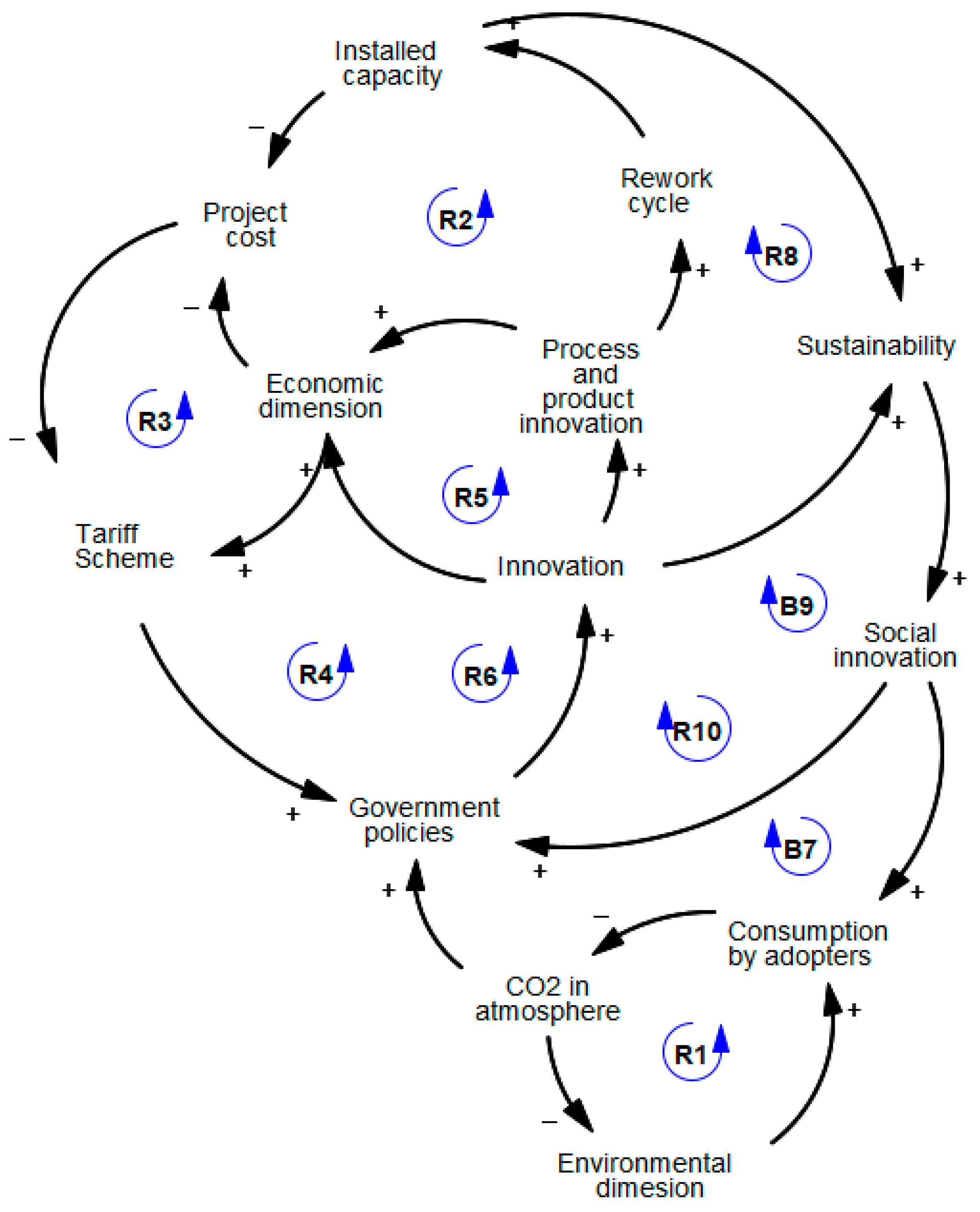
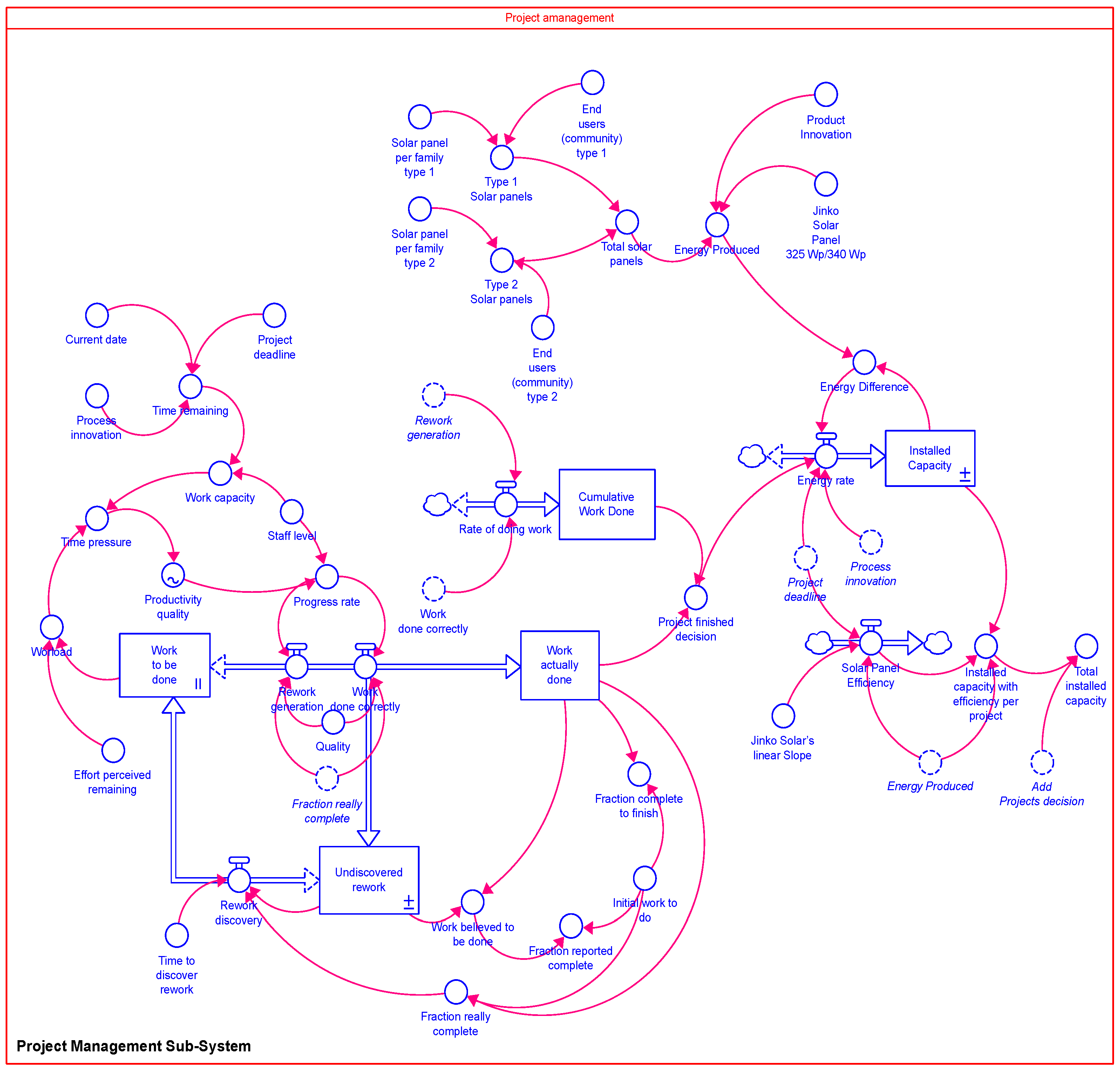

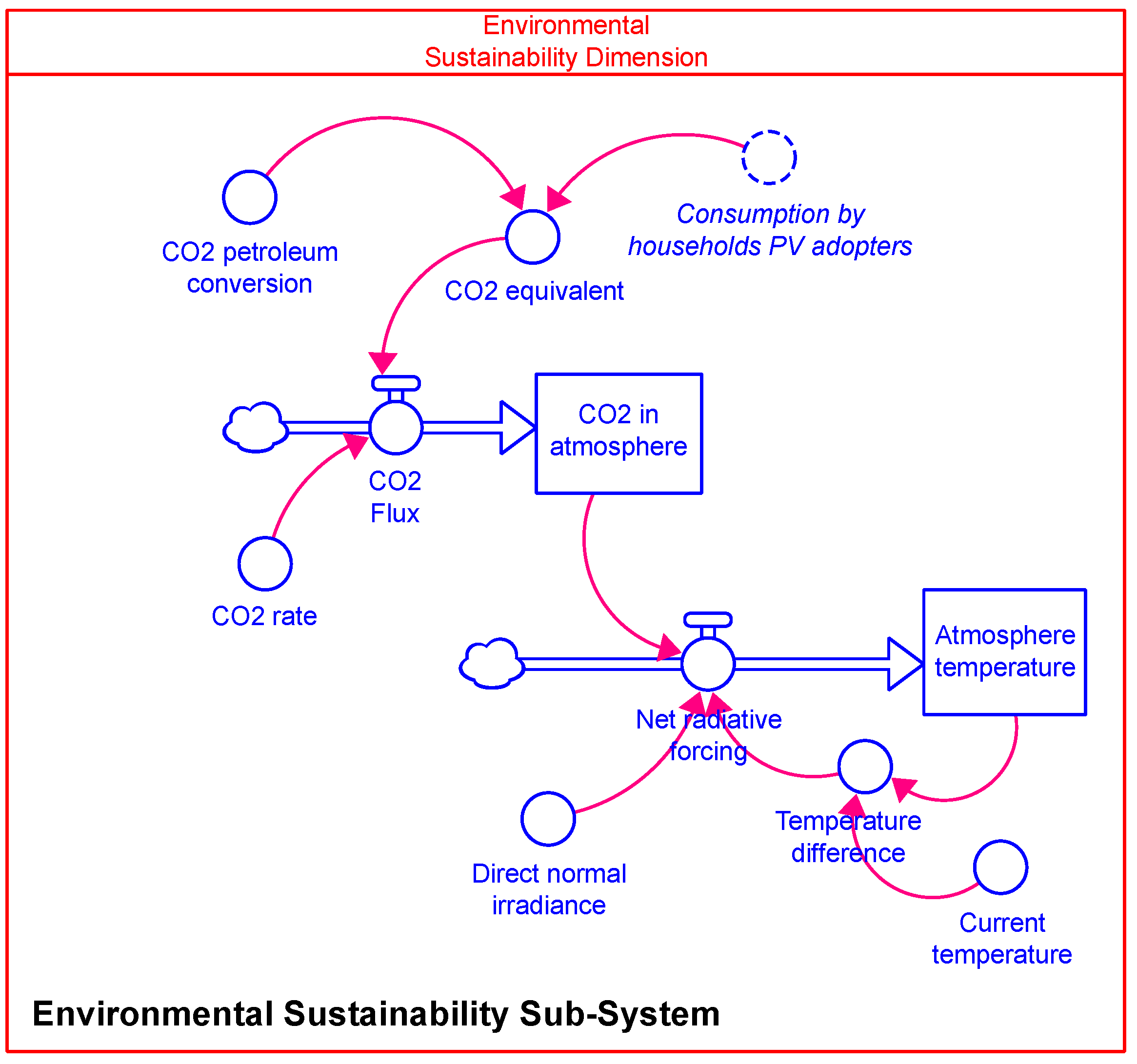
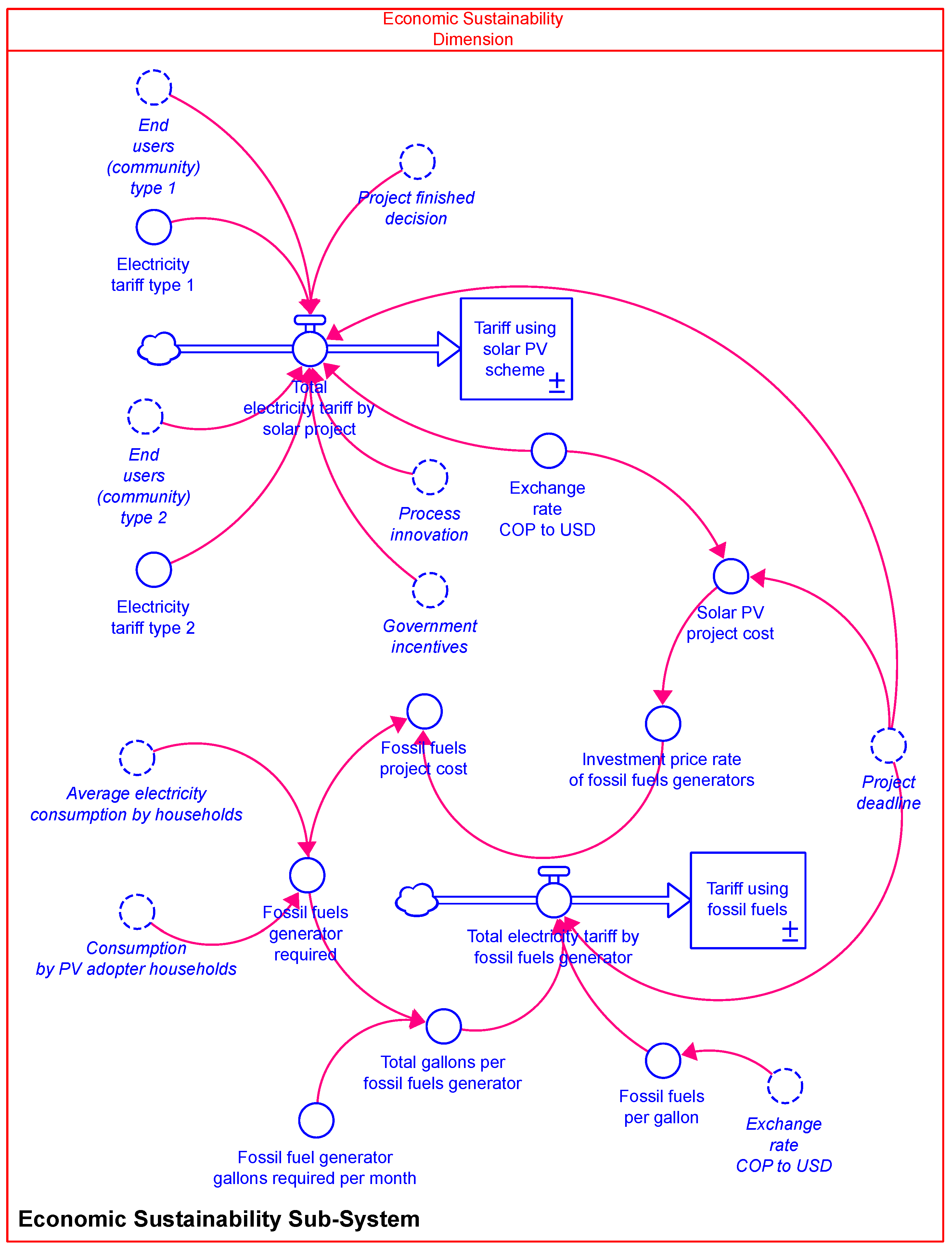

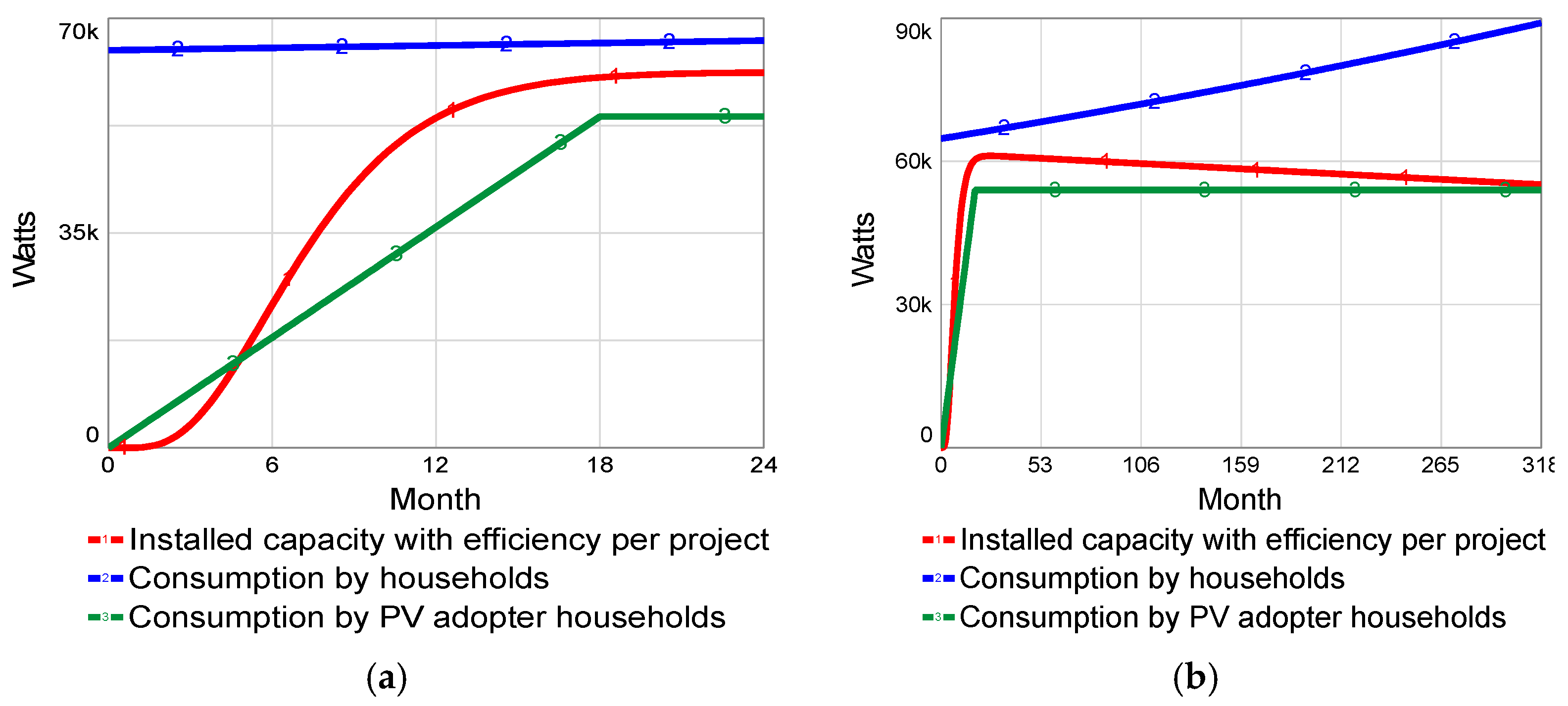
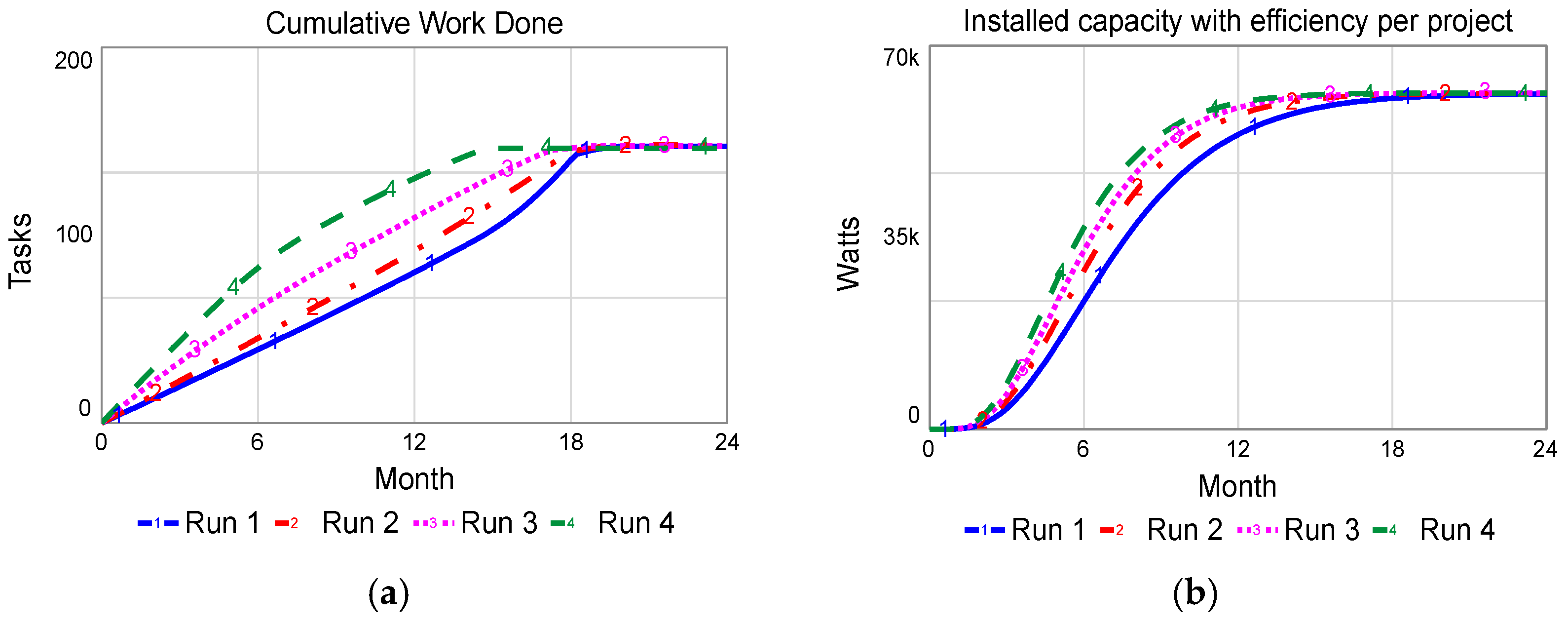
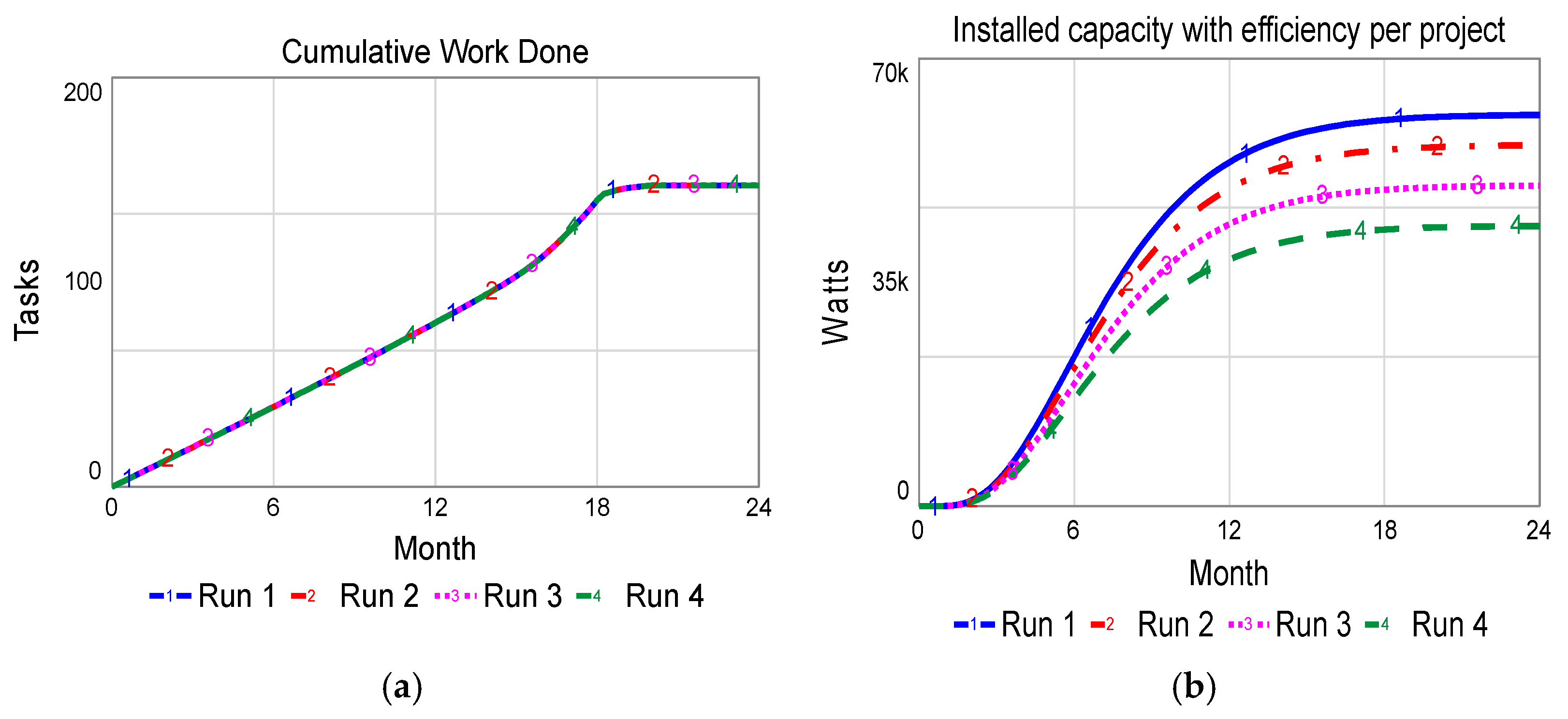
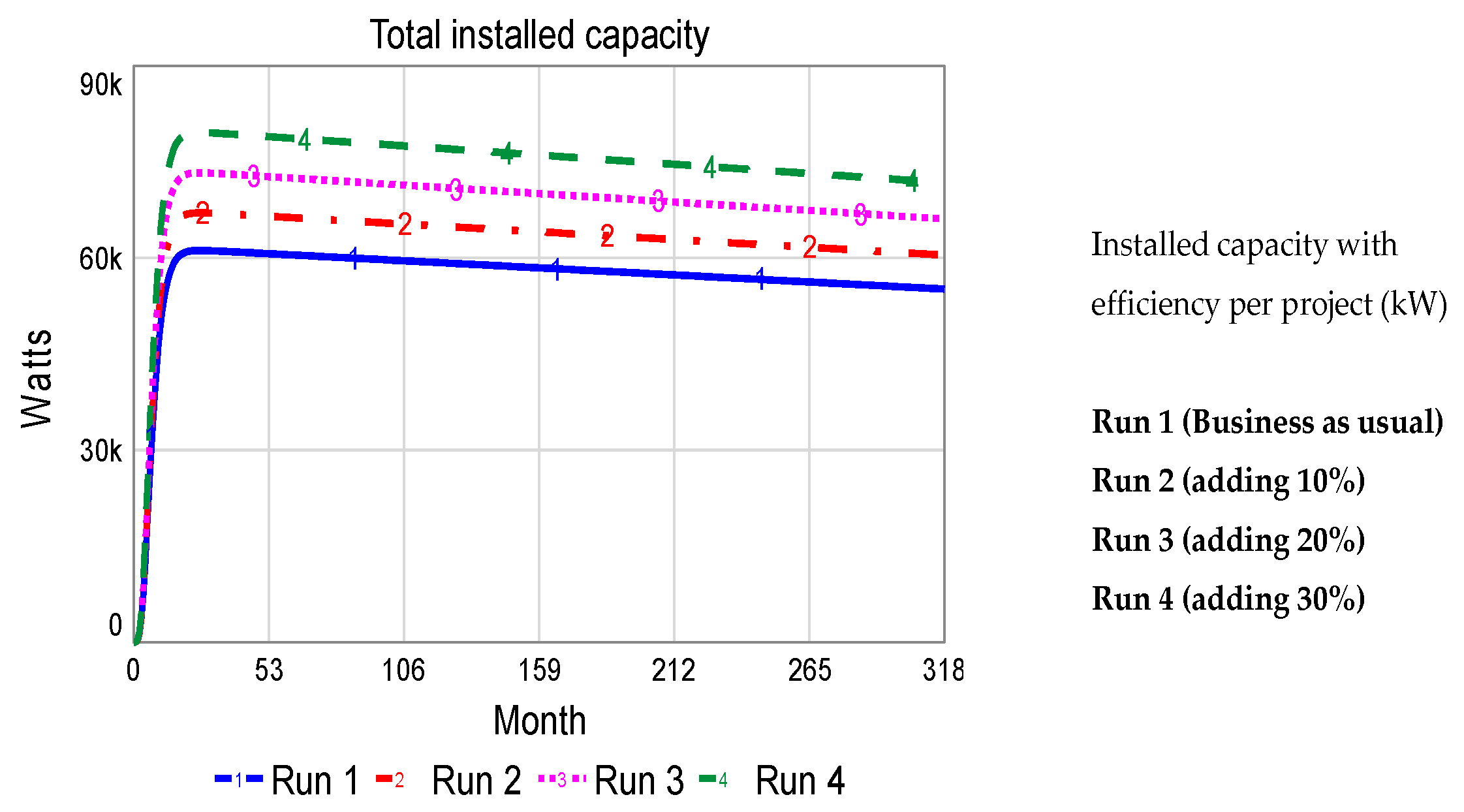
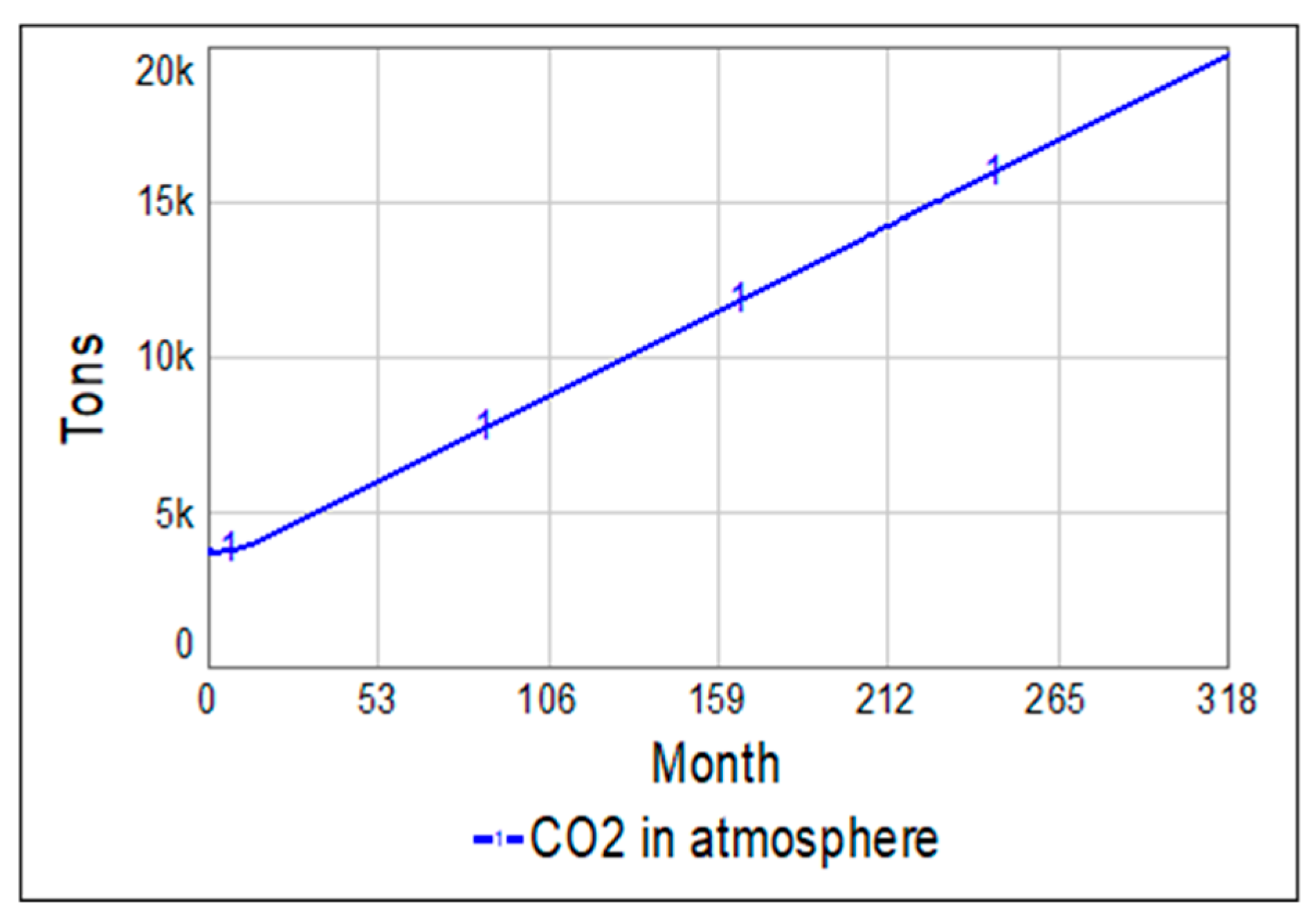

| Variable | R2 | Um | US | UC |
|---|---|---|---|---|
| Work Actually Done (simulation without rework cycle) | 0.860 | 0.609 | 0.128 | 0.262 |
| Cumulative Work Done (simulation with rework cycle) | 0.860 | 0.069 | 0.006 | 0.923 |
Disclaimer/Publisher’s Note: The statements, opinions and data contained in all publications are solely those of the individual author(s) and contributor(s) and not of MDPI and/or the editor(s). MDPI and/or the editor(s) disclaim responsibility for any injury to people or property resulting from any ideas, methods, instructions or products referred to in the content. |
© 2025 by the authors. Licensee MDPI, Basel, Switzerland. This article is an open access article distributed under the terms and conditions of the Creative Commons Attribution (CC BY) license (https://creativecommons.org/licenses/by/4.0/).
Share and Cite
Calderon-Tellez, J.A.; Herrera, M.M.; Sabogal-Aguilar, J.; Tuirán, M.; Zapata, S. Systemic Insights for Value Creation in Solar PV Energy Markets: From Project Management to System Impacts. Energies 2025, 18, 1409. https://doi.org/10.3390/en18061409
Calderon-Tellez JA, Herrera MM, Sabogal-Aguilar J, Tuirán M, Zapata S. Systemic Insights for Value Creation in Solar PV Energy Markets: From Project Management to System Impacts. Energies. 2025; 18(6):1409. https://doi.org/10.3390/en18061409
Chicago/Turabian StyleCalderon-Tellez, Javier A., Milton M. Herrera, Javier Sabogal-Aguilar, Melisa Tuirán, and Sebastian Zapata. 2025. "Systemic Insights for Value Creation in Solar PV Energy Markets: From Project Management to System Impacts" Energies 18, no. 6: 1409. https://doi.org/10.3390/en18061409
APA StyleCalderon-Tellez, J. A., Herrera, M. M., Sabogal-Aguilar, J., Tuirán, M., & Zapata, S. (2025). Systemic Insights for Value Creation in Solar PV Energy Markets: From Project Management to System Impacts. Energies, 18(6), 1409. https://doi.org/10.3390/en18061409






